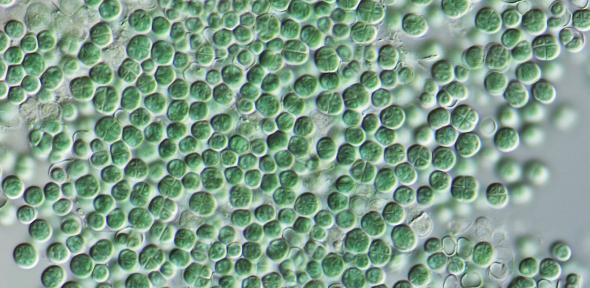
This work demonstrated how the Hilbert Huang Transform may be applied to analyse bioelectrochemical signals. Electrons from cyanobacteria photosynthetic and respiratory systems are implicated in current generated in biophotovoltaic (BPV) devices. However, the pathway that electrons follow to electrodes remains largely unknown, limiting progress of applied research.
Cyanobacteria are a group of prokaryotes (a microscopic single-celled organism) that are capable of carrying out oxygenic photosynthesis. These microorganisms have gained attention in the field of biotechnology due to their efficient photoautotrophy, genetic amenability, and the potential for direct conversion of carbon dioxide (CO2) to useful products.
The pathway that electrons follow to electrodes remains largely unknown, limiting progress of applied research. Here we use Hilbert–Huang Transforms to decompose Synechococcus elongatus sp. PCC7942 BPV current density profiles into physically meaningful oscillatory components, and compute their instantaneous frequencies. We develop hypotheses for the genesis of the oscillations via repeat experiments with iron-depleted and 20% CO2 enriched biofilms. The oscillations exhibit rhythms that are consistent with the state of the art cyanobacteria circadian model, and putative exoelectrogenic pathways. In particular, we observe oscillations consistent with: rhythmic D1:1 (photosystem II core) expression; circadian-controlled glycogen accumulation; circadian phase shifts under modified intracellular %ATP; and circadian period shortening in the absence of the iron-sulphur protein LdpA. We suggest that the extracted oscillations may be used to reverse-identify proteins and/or metabolites responsible for cyanobacteria exoelectrogenesis.
A confirmation of the hypotheses developed in this work may offer a bioelectrochemical approach for performing simple chronobiology experiments that eliminates the need for engineering reporter strains and extensive fluorescence measurements typical in the study of cyanobacteria circadian rhythms, while increasing the time resolution of experiments.
Publication: Nature Scientific Reports (June 2022): doi.org/10.1038/s41598-022-15111-y
Image credit: T. Darienko

